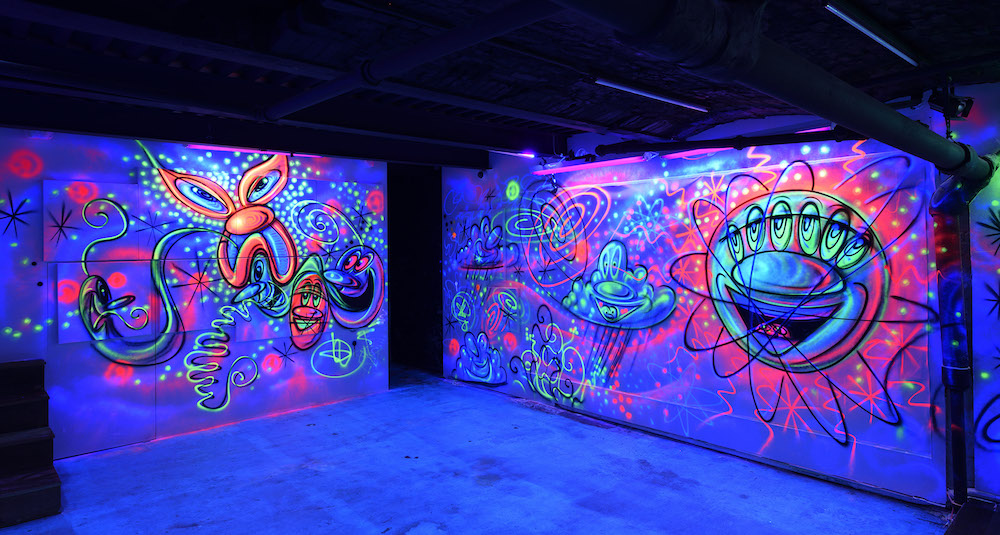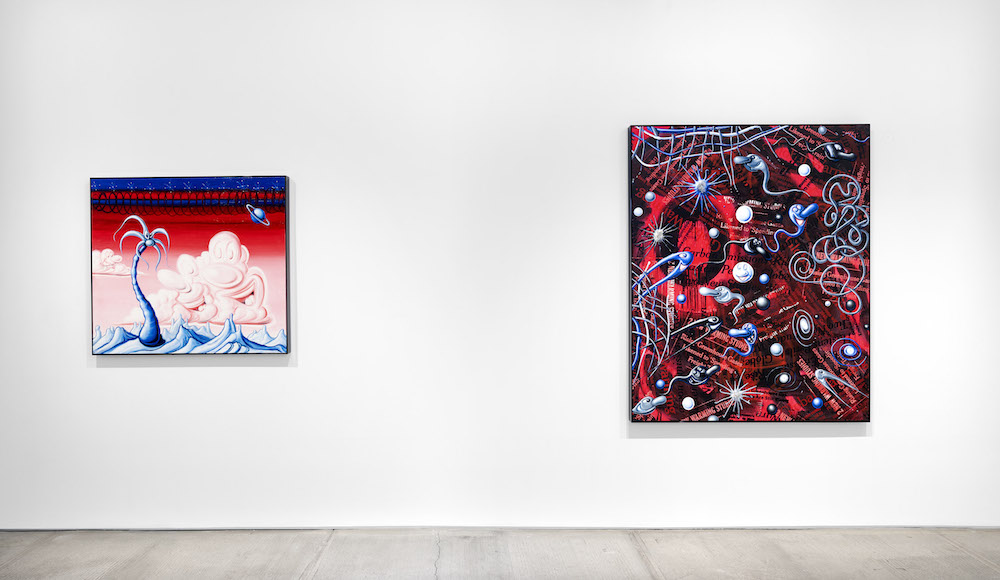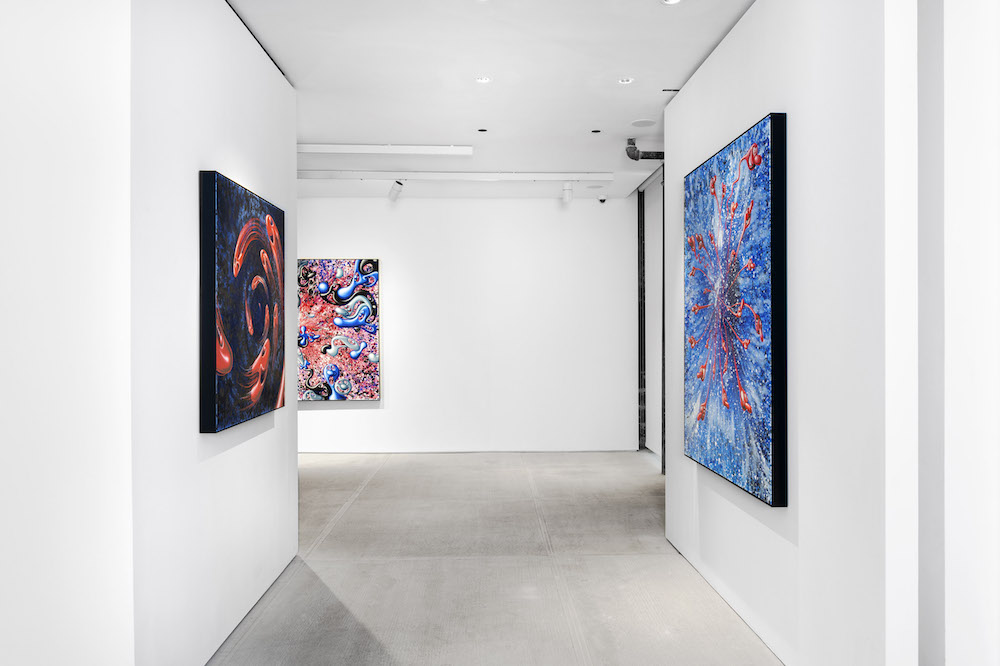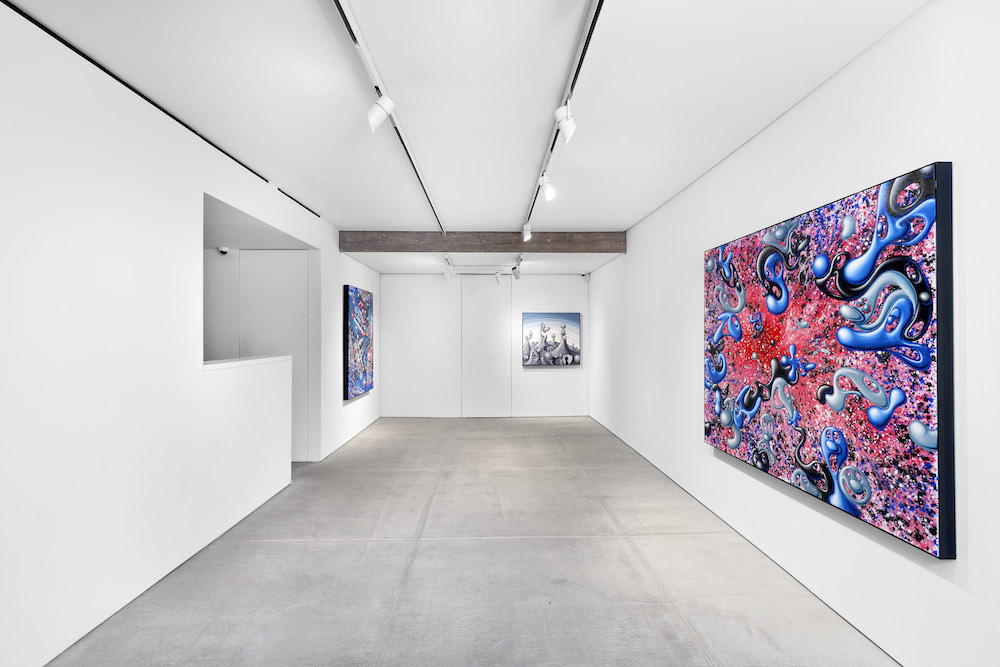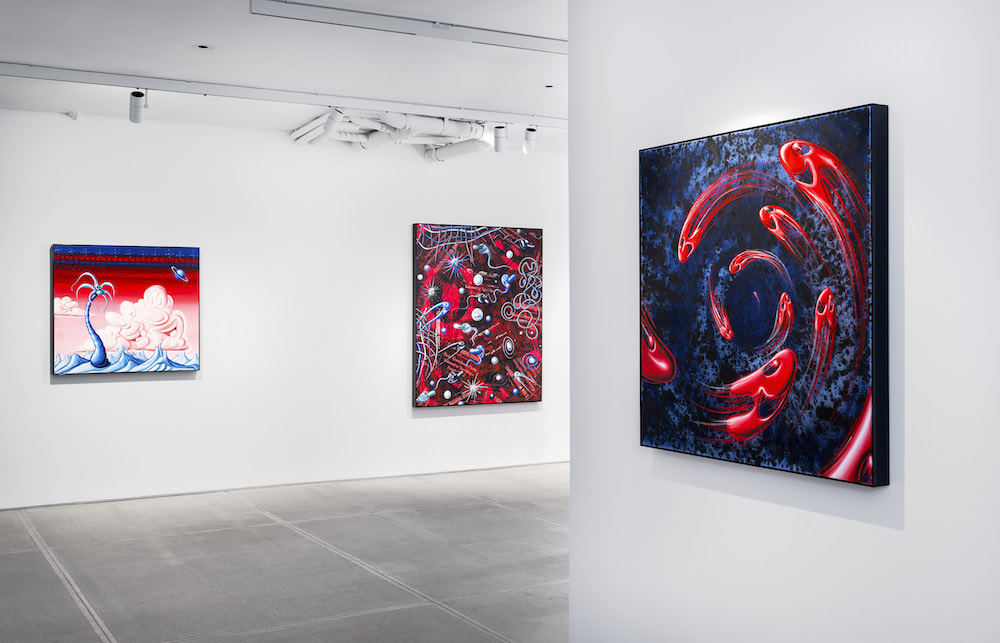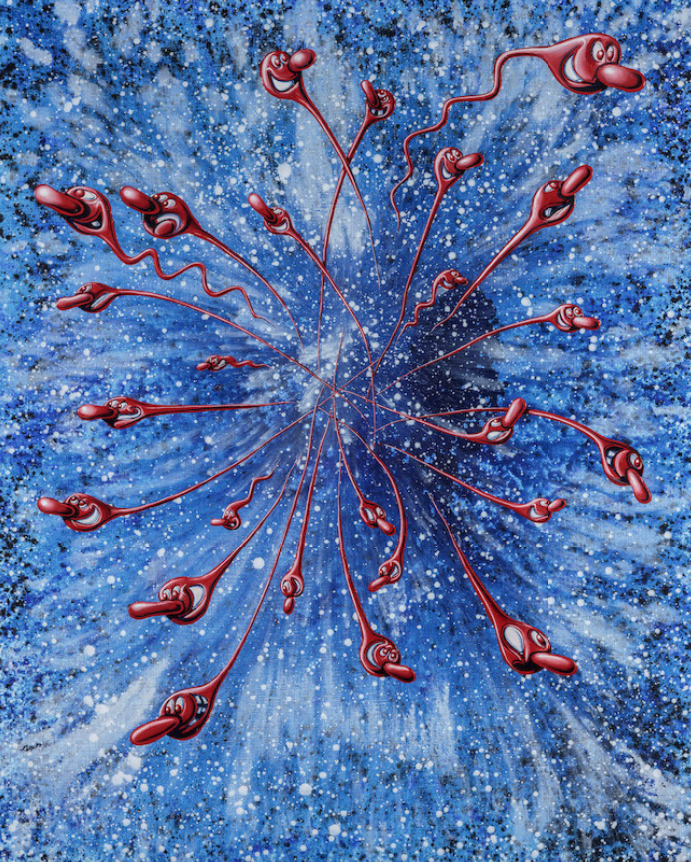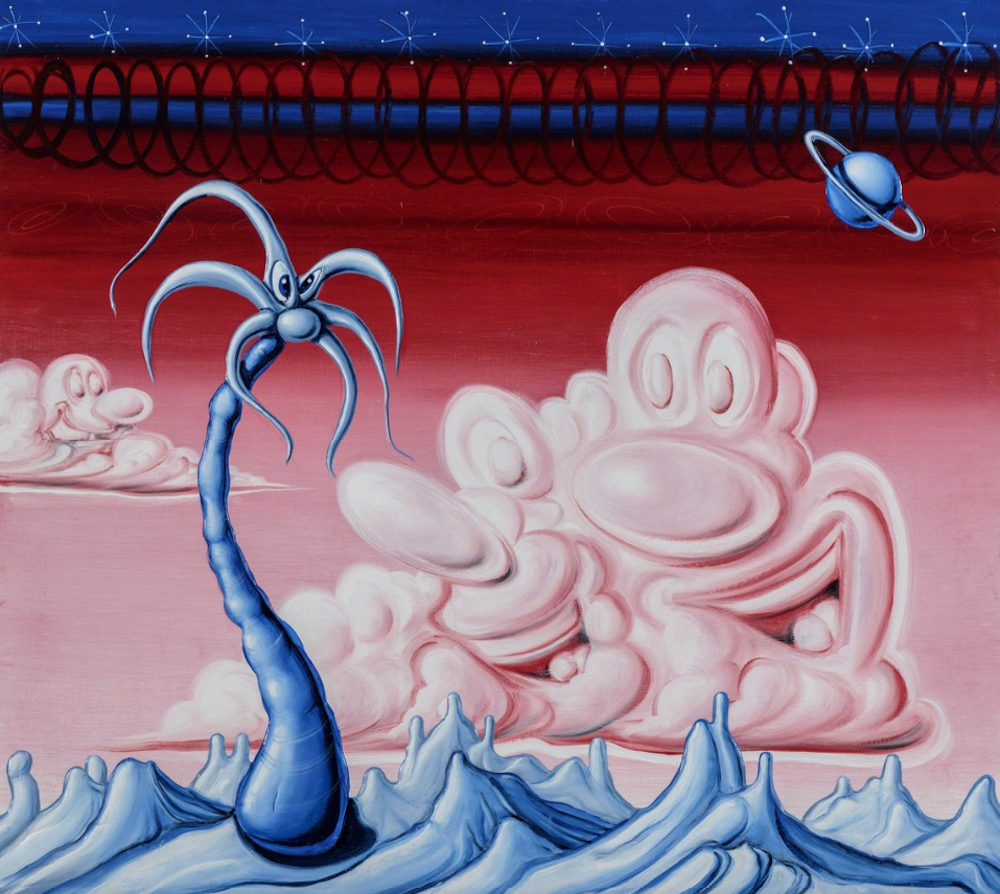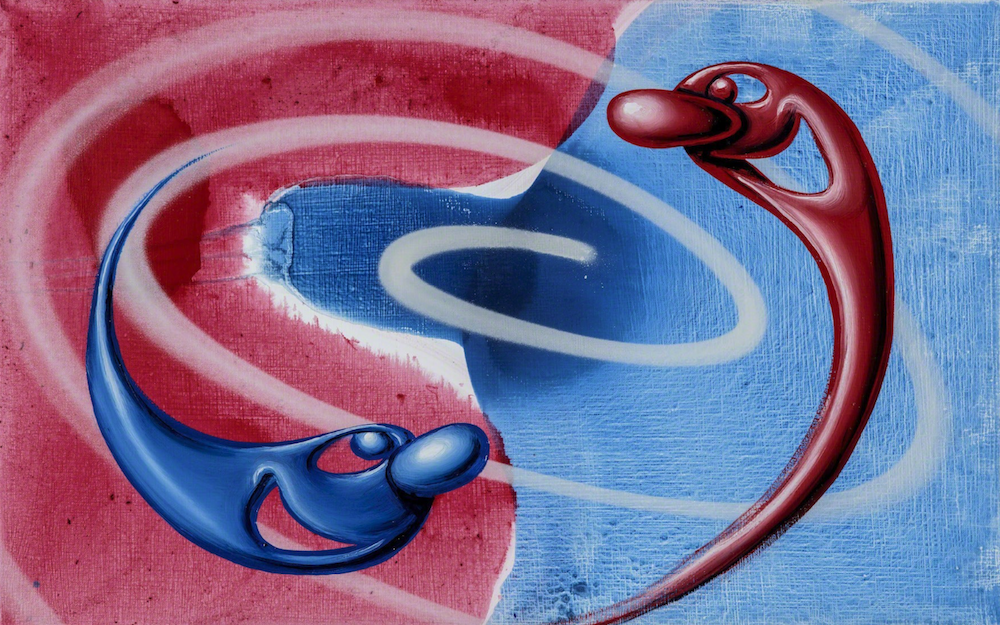If you are going to build the Pantheon of Juxtapoz in our 25th year, you start looking at the pillars who have made the foundation of what the magazine means today. Kenny Scharf, with his work that spans the eras of Keith Haring, Robert Williams, Art in the Streets to Beyond the Streets, he is often looked at as a pivotal figure of combing contemporary and outsider art practices with a bit of fun and interactive quality.
On May 2nd, and running through July 28, 2019, Kenny Scharf is showing Blue Blood, a new series of paintings and an installation at TOTAH in NYC.
Using a strict palette of three colors—red, blue, and gray, with subtle shades and overlappings thereof— blue blood showcases surrealist landscapes that are playfully ebullient without lacking in emotional depth. Extending Scharf's inimitable iconography, the paintings in the main gallery are replete with otherworldly creatures, equally parodic and pop. What distinguishes blue blood, however, is the way these painterly compositions seem to physicalize abstract notions—futuristic planets, personified nebulae, and risible vortices transmogrify into alluring visages and patterns.
Scharf's paintings hint at narratives bubbling just below the surface of the paint. In FUZZUNGLE (2019) the natural world, filled with sidereal flora and fauna, becomes a gala for humanoid lifeforms. In a work titled IN THE BEGINNING (2019) a troop of clownish spermatozoa seem to parade from a place of invisible origin. Both paintings superficially look like illustrations, but they wholly resist the narrative that illustration presupposes. In the way both are composed, there's a nervous rhythm that seems to express the presence of the artist's hand— Scharf's subjectivity—more than the narrative of any story.
The in-situ performance installation in the gallery's lower level, submerged in black-lit darkness, establishes a counterpoint to the paintings in the main gallery. Scharf's use of spray paint—partially onto the walls, partially onto canvas—alludes to his historical connection with the East Village of the 1980s, underscoring a masterful painting technique while exemplifying his exuberant disregard for boundaries. By translating his painting into the environment, Scharf's artistry seems to capture momentary hallucinations, like a thrown-around net - an otherwise fleeting perception that is difficult, if not impossible to bring to the light of consciousness.

